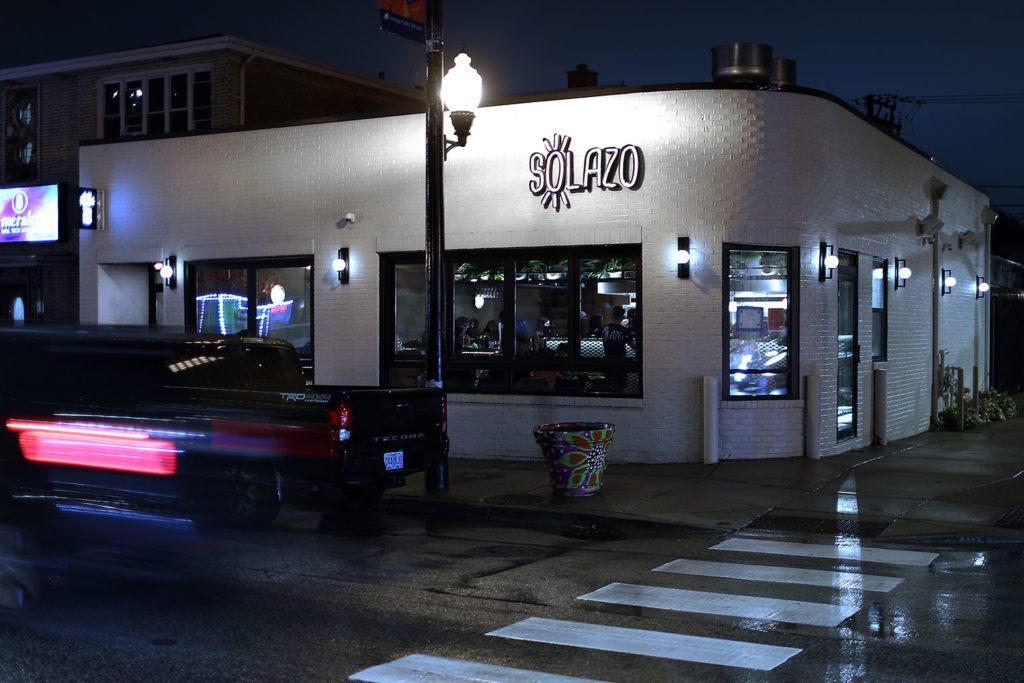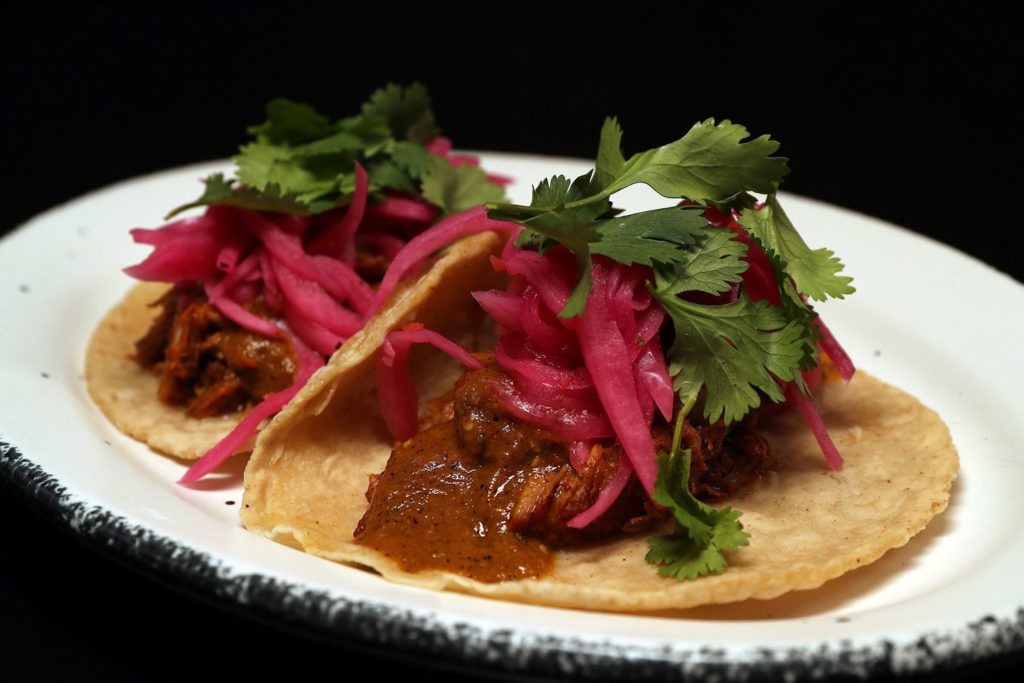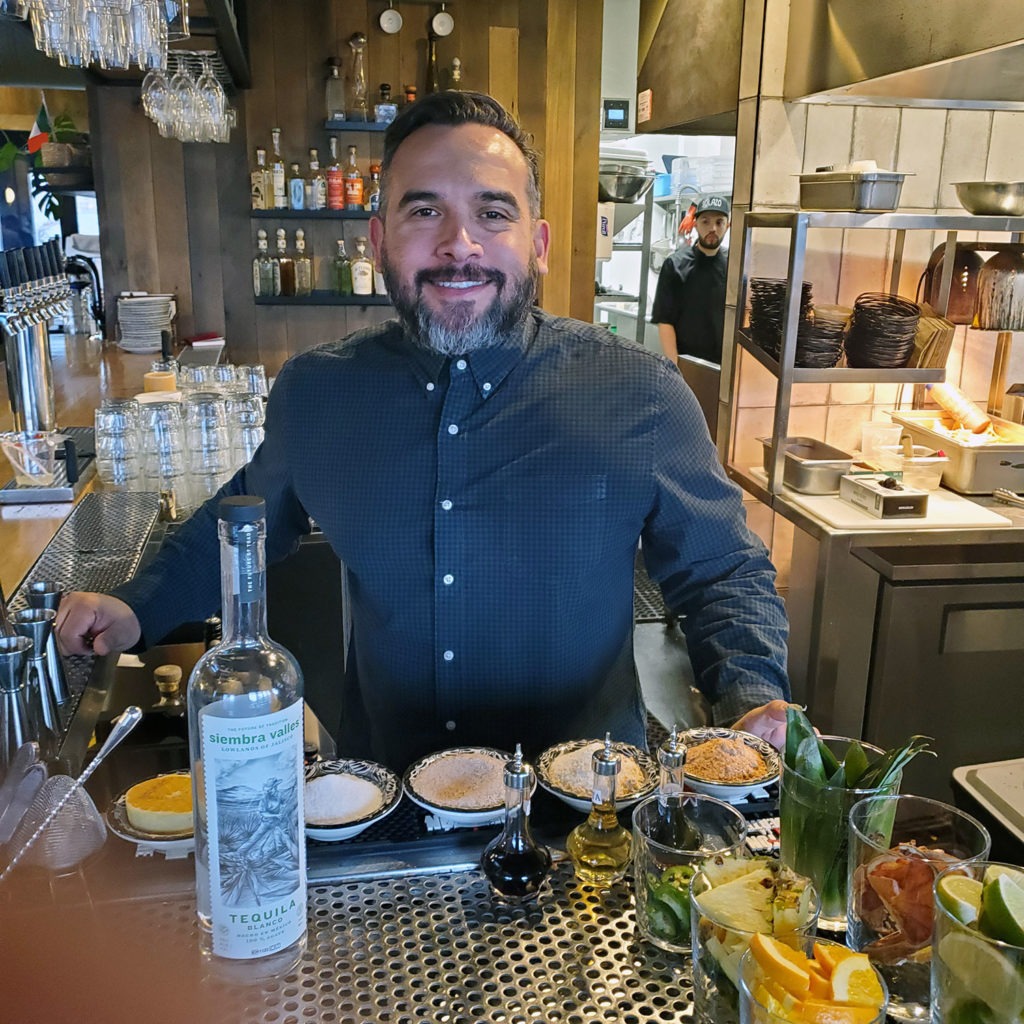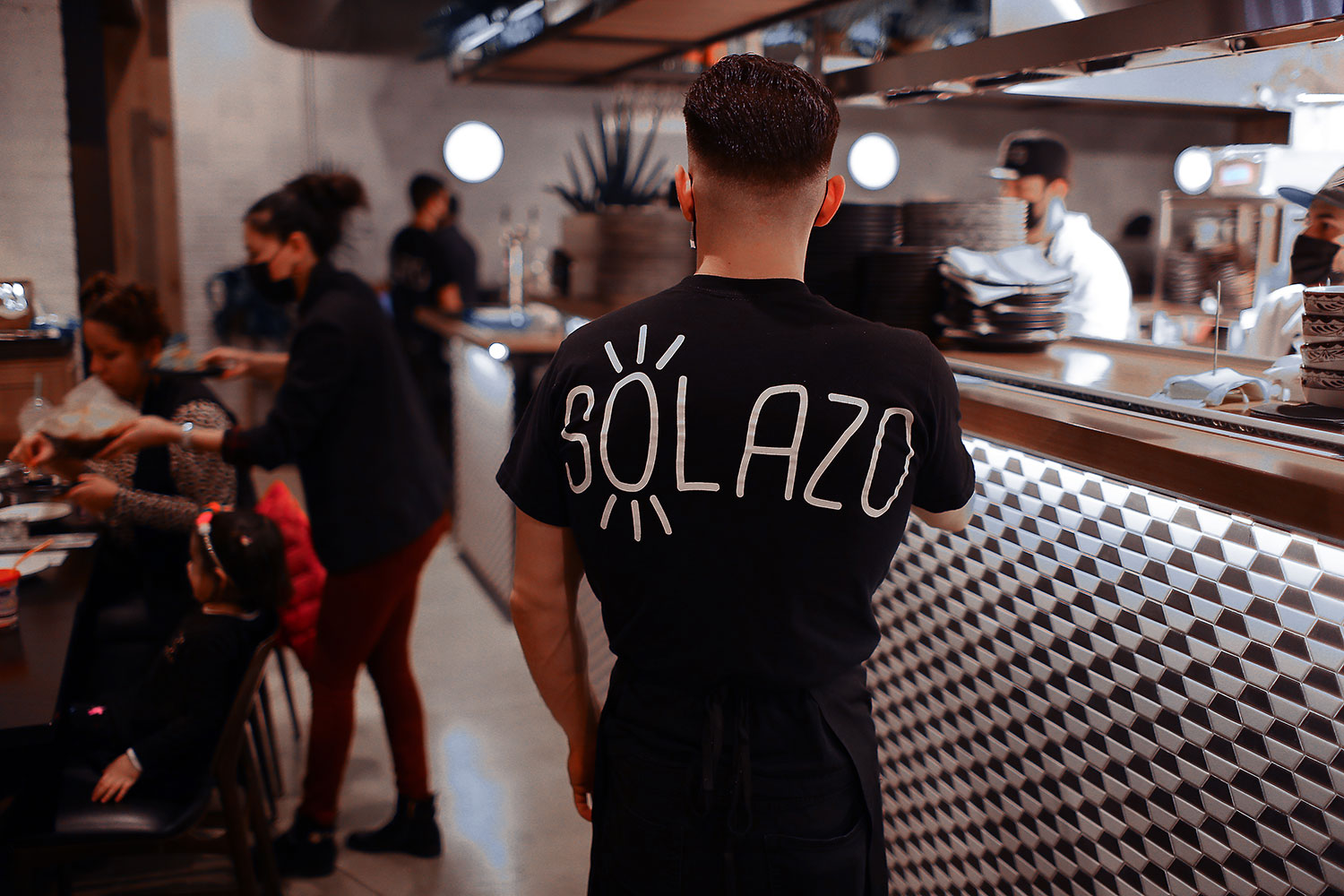West Elsdon, I owe you an apology.
Last year, I wrote a series called “Something Good in Every Neighborhood,” in which I described my favorite place in 76 of the city’s 77 community areas. I left out West Elsdon, the overlooked Southwest Side neighborhood between Brighton Park and Midway Airport.
“This is a residential neighborhood,” I wrote. “You don’t want to visit, and they probably don’t want you there, either. Also, why does Chicago have a West Elsdon, but not an East Elsdon?”
West Elsdon is a lower middle class Latino neighborhood, dominated by chain stores. Get off the Orange Line at Pulaski, and you’ll immediately walk past Giordano’s, Red Lobster, Game Stop, Dollar Tree, Discovery Clothing, Jewel-Osco, McDonald’s. Stores you can find in any neighborhood. Walk a little further down Pulaski, though, to 56th Street, and you’ll find Solazo. A Mexican restaurant inside a whitewashed brick building, with an agave bar and a long seafood menu, Solazo is the creation of Pepe Barajas, a Mexican immigrant kid from the neighborhood who also owns La Josie in the West Loop. His twin goals for his two restaurants: bring the Southwest Side’s Mexican culture downtown, and bring diners from downtown to West Elsdon.

Barajas migrated to Chicago with his mother when he was 7 years old and grew up in Little Village, then West Lawn. As a teenager, he dropped out of Hubbard High School to learn the food business from his uncles, who operated Los Comales, a chain of traditional Mexican restaurants on the Southwest Side. (He later earned a GED.) Starting out as a dishwasher, Barajas soon decided that he wanted to operate his own restaurant, with his own menu. In 2005, he learned that the owners of Hey Bud’s Hot Dogs, a popular West Elsdon greasy spoon, were going out of business and putting their stand up for sale. He bought it for $315,000 and opened El Solazo, with a menu that added the cuisines of Jalisco – the Pacific Ocean state where his mother grew up – Mexico City, and Yucatan to the typical neighborhood Mexican fare. Even before he signed the contract on the property, he knew he didn’t want to open another taqueria.
“I knew coming into this neighborhood, and into this space, that I had to do something different, just because I was so close to what my family was already doing,” Barajas said. “They were starting to go into a bigger production method, where I wanted to keep it small batch. We made seasonal menu updates. We did a lot of things they weren’t doing at the other establishments. It was a bigger menu, with a lot more seafood. It wasn’t sticking to the most commonly found items on a Mexican menu: burritos, tacos. We did gorditas, we did sopes.”
El Solazo was a neighborhood hit, with an appearance on WTTW’s Check, Please, so in 2016, Barajas took his act downtown, opening La Josie at 740 W. Randolph St. — a Jalisco-themed restaurant named after his aunt. La Josie had a much fancier menu than El Solazo. The langosta taco is pan-seared Maine lobster, butter-roasted tomatillo and jalapeño salsa, corn hash, crispy onions, and cilantro. The restaurant was named to Chicago’s Michelin Bib Gourmand list.

In 2019, El Solazo was nearly gutted by an electrical fire. Barajas spent two years rebuilding. He didn’t just redesign the building, which still had some of the same layout as Hey Bud’s, he redesigned the menu — this time, to bring the West Loop dining experience to West Elsdon. He obtained a liquor license so he could open a bar serving agave from Michoacan and Jalisco. He served guacamole with pomegranates, and a vegetarian taco filled with butternut squash, sweet potato, crimini mushrooms, and Mexican zucchini. He began making tortillas and chips in house, as he was doing at La Josie. He also shortened the name to “Solazo” — a stylish single word.
“The style of service was to give people an opportunity in this neighborhood, to experience what dining at an upscale casual restaurant should feel like,” Barajas said. “That’s from both sides — a guest perspective, and people working in a restaurant, to give them the opportunity to also work in an organized fashion. A lot of the youth that are growing up in West Elsdon, or growing up on the Southwest Side, maybe don’t get that opportunity.”

Alondra Matias, a 27-year-old server who grew up two blocks from Solazo, said some folks in the neighborhood were skeptical of Barajas’s upscale ambitions.
“They were just kind of like, ‘Where’s the old menu?’,” Matias said. “The pomegranate in the guacamole — they were afraid to try something new. I said, ‘Just give it a try.’ I think we’re starting a different trend in this neighborhood. A lot of people who dine here, they say, ‘You give me River North, but you don’t have to look for parking.’”
Solazo reopened on September 16, 2021 — a significant date, because it was Barajas’s mother’s birthday: “My mom and I, her being a single mom and me being a single child, we’ve been best friends.” In 2022, the restaurant won a Chicago Tribune’s Critics Choice Award for “Comeback of the Year”: “Barajas took a research trip to Oaxaca City, Mexico, where he sampled the many local markets and worked at one of the city’s hottest restaurants, El Destilado,” wrote the newspaper’s restaurant critics. “Along the way, he became infatuated with mole coloradito, one of the area’s famous seven moles.You can now sample the chicken enchiladas ($18) bathed in the deeply complex mole.”
One of the best results of the redesign, says Barajas, is that it’s been bringing foodies from all over Chicago and the suburbs to West Elsdon, a place they may never have visited before — especially if they relied on the recommendations of a lazy blogger who didn’t bother to explore the neighborhood before dismissing it as a place “you don’t want to visit.” (I discovered Solazo last month, when I stopped for lunch in West Elsdon during a bike ride from Gage Park to Garfield Ridge, determined to find something good in that neighborhood. And write about it. As I just did. Oh, and by the way, according to the Encyclopedia of Chicago, the neighborhood is called West Elsdon because it was west of “[a] small hamlet of railroad workers called Elsdon [which] grew up around car shops built by the Grand Trunk Railroad near 51st Street and Central Park.)
“In West Elsdon, I would say that we are the only establishment that’s offering this type of experience,” Barajas said. “We have a lot of [neighborhood] regulars, and we have a lot of people come in from other parts of the city, like Wicker Park. I definitely want to put everything we’re doing on the map, including West Elsdon.”



